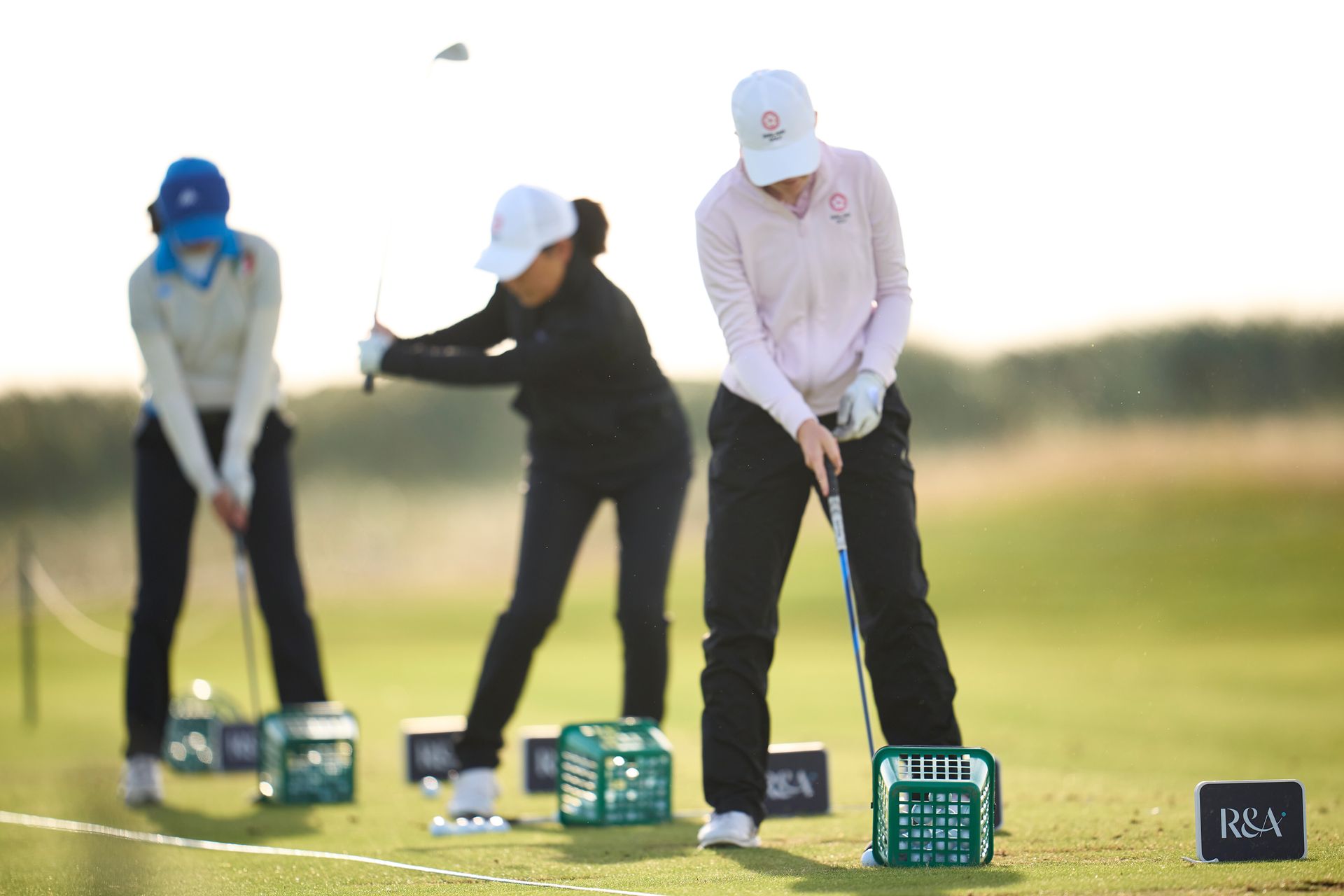First thing to say is that the two are not mutually exclusive – A PGA Pro will often play as a Tour Pro, competing in the same events, and many Tour Pros are also PGA Pros. But at both ends of the spectrum of what golf professionals do for work, there are clear differences in how your average Tour Pro and regular PGA Pro earn their coin. Here, in a nutshell, is how the Tour Pro and PGA Pro ply their trades –
Tour Pro

(Image credit: Getty Images)
A Tour Pro or touring professional golfer predominantly aims to make their living by enjoying a successful competitive playing career. They focus their energies on getting everything they can from their games. The modern tour pro is an athlete who will spend every day trying to improve – practicing golf, working on fitness, nutrition, mental strength… Exploring all avenues to give them a competitive edge.
Whether they compete at the very highest level – The PGA Tour, The DP World Tour, LPGA or LET circuits, or even the new LIV Golf tour – or at a lower level on a feeder tour or domestic circuit, their principal focus is winning golf tournaments, or at least finishing as high up on the final leaderboard as possible to earn prize money and status to get their name noticed by potential sponsors.
Across the globe there are thousands of Tour Pros, plying their trade on numerous circuits in each corner of the golfing globe. Those on the lower rungs of the ladder may be trying to climb upwards through the rankings to reach the loftier heights of the professional game – To play in those televised tournaments we see each week on the main pro Tours and even to make it into the Majors .
There will also be Tour Pros who play at a lower level and are content to stay at that level – In some cases being a bigger fish in a smaller pond can be more lucrative. The cost of playing on one of the main, international, professional tours is extremely high and, if a Tour Pro doesn’t enjoy a level of success, they can easily spend more than they earn. Playing a circuit closer to home with lower prize funds is a more sensible financial set-up for many, given the far lower expenses incurred.
Tour Pros will supplement the prize money they earn with sponsorship money from golf manufacturers and businesses outside of golf. They will have a certain number of responsibilities each year through their sponsorship deals – To meet clients of their sponsor, to deal with the media, to use the right equipment and wear the correct badges/labels on the golf course. At the highest level, these sponsorship deals will often earn the top players more money than they pick up in prizes. At a lower level, the sponsorship deals are often crucial to keep the traveling professional afloat.
PGA Professional

(Image credit: PGA)
A PGA Professional is a member of the Professional Golfers’ Association. To become a member of the association in this country one must undertake a three-year training program which since 2003 has been a nationally recognized qualification – a Foundation Degree in Professional Golf. You also have to obtain an Association of Sports Qualification’s Level 2 certificate in coaching golf, as well as attaining a first aid certificate, undergoing a background check and to have competed at a professional level to an agreed standard – It’s a highly regarded qualification and one that opens doors.
The options for a PGA Professional are wide ranging. These days, there’s a great deal more to choose from than the inaccurate old cliché of simply, “selling Mars bars in a shop.” PGA Professionals work in coaching, managing, retail, administration and manufacturing. From designing courses to coaching an elite player – there are hugely exciting options to explore.
There is also the opportunity to work all over the world – The PGA has 8,000 members, with 1,500 of these working internationally in more than 80 countries.
The modern PGA Professional working at a golf club or facility in this country has a raft of responsibilities that far exceed those of the traditional “club pro.” The role has transformed from that of a shopkeeper doing the odd repair job and giving an occasional lesson to one that’s far more dynamic with PGA Pros involved in at least some, if not all areas of golf club management as well as coaching, PR, finance , retail and sharing general golfing expertise in equipment, technique, Rules and golf technology.
Once a member of the PGA, it’s possible to progress up the ranks – from PGA Professional to PGA Advanced Professional, PGA Fellow Professional, PGA Advanced Fellow Professional, then, at the top of the pile – PGA Master Professional.
But, of course, most PGA Professionals are in the business because they love golf and there are many opportunities for PGA Pros to play the game competitively – There are PGA events in every region and, as qualified pros, they are able to enter qualifying for larger events and even tours. Famous players like Paul Lawrie and Ian Poulter began their careers as PGA assistant professionals and made their way into Tour golf.
The fundamental difference between a Tour Pro and a PGA Pro is a Tour Pro predominantly makes their living from playing the game, whereas a PGA Pro makes their living by using their knowledge of golf to instruct, manage, sell, make or promote within or around the game